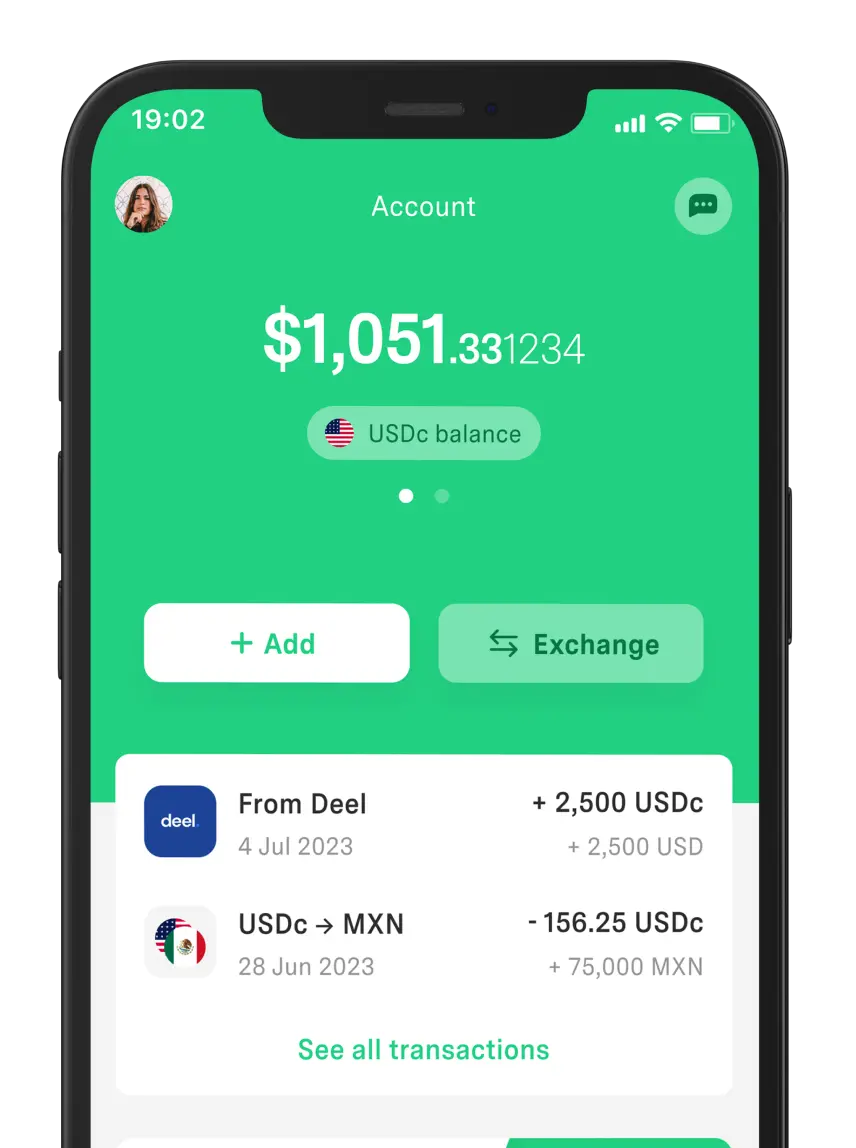 Your Money
Your Money Annual Tax Return 2025: What You Need to Know
Now that it’s already 2025, it’s time to get ready to file your taxes for the 2024 fiscal year. We have all the details right here.



International credit cards are designed for people who frequently travel or make purchases in foreign currencies. While they’re a flexible tool that offers several benefits, they can also become a financial burden if not managed properly.
In this article, we’ll start by defining international credit cards, then dive into their pros, cons, and costs.
International credit cards are products intended for use abroad, unlike cards that are limited to domestic transactions. This means they allow you to make payments and cash withdrawals in various countries, using multiple global currencies.
These transactions are facilitated through global networks like Visa, Mastercard, or American Express, making it easy to make payments at many points of sale and ATMs worldwide.
While international credit cards in Mexico are usually convenient for travel, they’re not without drawbacks.
Here’s a look at the main pros and cons:
Advantages | Disadvantages |
Global acceptance at stores and ATMs through Visa, Mastercard, or American Express networks. Allow you to accumulate points or miles for future travel benefits. Often offer deferred payment options for greater financial flexibility while traveling. Enable payments and withdrawals in various currencies. Are more convenient than carrying cash. Some credit cards offer added benefits like fraud protection, travel insurance, and emergency support. | STypically, they carry fees for usage, currency conversion, and maintenance. If you don’t pay your balance in full on time, interest rates can be high. Some may have limits on usage abroad. They can be challenging to obtain. |
International credit cards are practical, but they’re most beneficial for those who use them regularly, as the associated costs can add up.
As mentioned, one of the main disadvantages of international credit cards is the fees they come with. Here are some of the key costs:
Usage Fees: Charges applied for purchases or ATM withdrawals in another country.
Annual Fee: Most cards require an annual fee for maintenance.
Currency Conversion Fee: International credit cards typically charge for currency conversion when transactions aren’t in Mexican pesos.
Interest Rates: These vary depending on the card and its benefits and may increase if you don’t pay the balance in full.
Costs depend on the issuing bank. For example, Citibanamex charges a 5% fee on ATM withdrawals abroad, while Santander charges USD 3, and BBVA charges between 2.5% and 7%, depending on the card type.
Credit or debit cards issued by traditional banks aren’t the only options for international use. Financial services from companies like Wise and DolarApp are also available.
Here’s what to consider when choosing an international Mastercard, Visa, or American Express card:
Compare Options.
Check International Coverage.
Verify Eligibility Requirements.
Look at the Benefits.
If you plan to travel often, check rewards and mileage programmes.
Check the percentage the bank will charge you for foreign currency payments.
Check if there are any restrictions on their use.
Evaluate which ones are useful for your travel style.
Consider services such as Revolut or DolarApp, as they offer multi-currency accounts.
See if the card has features such as contactless payments or dynamic CVV.
Make sure it allows international withdrawals with reasonable conditions and no restrictions on the daily amount.
Following these guidelines will help you find an international credit card that aligns with your travel needs.
International credit cards come with specific features and conditions.
Here’s what you need to know:
Installments: The number of installments available for paying off a debt, which can be a single payment or multiple.
Interest: Additional charges on purchases made with the card. If you pay the full balance by the due date, you can avoid interest; otherwise, interest applies.
Credit Limit: The maximum amount you can spend, determined by your credit history and financial capacity.
Fees: Additional charges from each bank, such as withdrawal and conversion fees.
Card Statement: A summary of recent transactions, payment due dates, and any interest charges, accessible online or via your bank’s app.
These factors will help you better manage your card and avoid unexpected costs.
Just like with bank transfers, it’s wise to take certain precautions when using international credit cards. Here are some key safety tips:
Never share your card number or access codes with others unless you’re certain they’re trustworthy.
Keep your card in a secure place when you’re not using it.
Create strong passwords and change them periodically.
Regularly check your statements for any incorrect charges or suspicious activity.
Test that your card functions properly upon arrival and familiarize yourself with the local exchange rate.
Keep your bank’s contact numbers handy in case you need to block your card or seek assistance from abroad.
Save purchase receipts and verify exchange rates at the time of payment.
Using an international credit card comes with financial responsibilities. Here are some strategies to help keep your debt under control:
Set a limit you can pay off easily each month.
Cover the monthly balance in full to avoid interest charges, saving you money in the long run.
If you can’t pay off the full balance, try making partial payments to reduce your debt and accumulated interest.
Use the card only when necessary.
If the debt is high, consider transferring it to a card with a lower interest rate to reduce monthly payments and pay it off faster.
These habits can help you manage your debt and enjoy the benefits of an international card without unnecessary costs.
DolarApp provides a modern, practical solution: the DolarCard, an international Mastercard.
DolarCard is designed specifically for international transactions across multiple countries.
Its benefits include:
Purchases in different currencies at the real exchange rate.
No typical conversion fees that come with traditional credit cards.
Simplified global payments to maximize each transaction.
Removal of typical obstacles associated with conventional cards.
Through the DolarApp, you can easily manage international expenses and monitor your spending in real time. DolarCard doesn’t come with maintenance fees, surprise charges, or annual fees. While a 1% fee applies for international withdrawals, this remains a minimal charge compared to the fees on bank-issued international credit cards.
But with DolarApp's premium membership, you will be able to withdraw up to 500 USDc ATMs with no fees.
Now, how to get an international card on DolarApp?
Here’s how to apply for a DolarCard:
1. Download the DolarApp if you haven’t already.
2. Create an account with your personal information.
3. Verify your identity by going to “Cards.”
4. Activate your virtual DolarCard by selecting “Activate my card.”
5. Upload any required documents.
6. Request a physical card (if your balance is over 100 USDc, you’ll receive it for free).
7. Expect delivery within 5–7 days.
DolarApp’s Mastercard international card is perfect for frequent or occasional travelers, as well as for anyone who wants the flexibility of paying in Mexican pesos and converting currencies at the best exchange rate available.

The world has borders. Your finances don’t have to.
 Your Money
Your Money Now that it’s already 2025, it’s time to get ready to file your taxes for the 2024 fiscal year. We have all the details right here.

 Your Money
Your Money Banks usually define a limit for bank transfers, but there are additional aspects you need to know.

 Your Money
Your Money A bank account usually has 10 digits, but which number should you provide so you can be paid? The bank account number or the CLABE? We explain.


